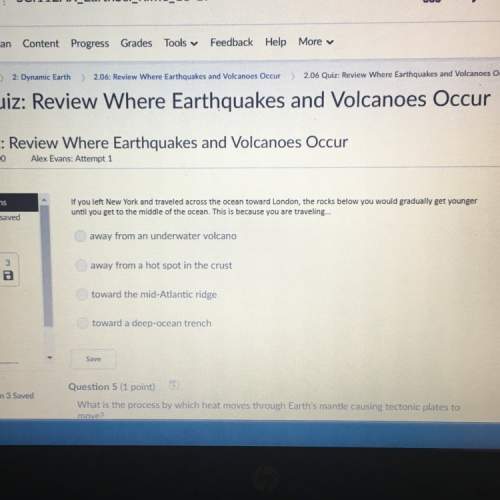
Biology, 17.03.2020 23:18, robert7248
A geologist is studying an ancient stack of rock layers. Most of the layers contain fossils of shallow marine creatures (clams, corals,
etc.), suggesting the layers formed in a shallow ocean environment. But at the top of the stack, there is a layer that could only have
been deposited by a river.
What does this change in rock layers tell the geologist about Earth's history in the area where these layers formed? (Assume the
layers have not changed position since they formed.)

Answers: 2
Other questions on the subject: Biology


Biology, 22.06.2019 11:00, ellieballinger9364
3what is the range of the function shownin the graph? ucation solutionsnw novo-9-8-7 -6 -5 -4 -3 -2 -1123456789
Answers: 1

Biology, 22.06.2019 11:00, Carlyalexis641
In pea plants, yellow seed color (y) is dominant and green seed color (y) is recessive. based on the punnett squares, what are the chances that the offspring in the second generation will have green seeds?
Answers: 2

Biology, 22.06.2019 11:30, kmchippps
According to theories of how life began, how did early organic molecules begin to separate from the outside world? a: specialized enzymes were required b: chains of amino acids created a barrier c: formation of microspheres or vesicles d: rna catalyzed the formation of membranes
Answers: 3
Do you know the correct answer?
A geologist is studying an ancient stack of rock layers. Most of the layers contain fossils of shall...
Questions in other subjects:

History, 18.09.2019 07:30

History, 18.09.2019 07:30



World Languages, 18.09.2019 07:30

English, 18.09.2019 07:30

English, 18.09.2019 07:30

English, 18.09.2019 07:30








